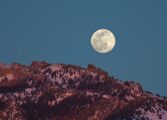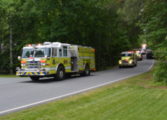By Page H. Gifford
Correspondent
On March 23, the Lake Monticello Wildlife Committee presented Create Your Backyard Wildlife Habitat With Native Plants. Speaker Ellen Stuart Haentjens, executive director of the Virginia Wilderness Committee with a Ph.D in biochemistry, ecosystems and ecology and a Masters in forest ecology discussed adding or creating native plants to existing landscapes.
With so many species of plants normally planted in backyards, some have become invasive, such as the Tree of Heaven and the Bradford Pear. Crepe myrtles are now being added to the invasive list. Many gardeners find that natives are less invasive and thrive better in their natural environment.
“The advantage to native plants is that they have already adapted to local and regional climates, they require less watering and attract pollinators,” she said. She added that the reason many gardeners resist native plants in their yards is they will grow wild and out-of-control. “A common standard is to have 70 percent native along with other plants. The worst offenders are exotic species, those that share a similar climate from China and Japan, and English ivy that climbs up trees and the sides of houses. Mosquitoes can breed under the leaves”
She suggests if there are certain things you want to attract to your yard such as bluebirds then plant native dogwoods, choral honeysuckle, and purple cone flowers. To attract goldfinches, plant choral honeysuckle, and black-eyed and brown-eyed susans.
Monarch butterflies are an endangered species; the population has been decreasing 20-30 percent due to pesticides. Yearly, four to five generations migrate between Mexico and Canada. Milkweed is essential for caterpillars and monarchs to thrive. Other plants butterflies are attracted to, including Joe Pyeweed, Goldenrod, Asters, and Phlox which can be found at most retailers.
She also added that when mulching, consider leaf mulch because most plants, including natives, do not like commercial mulch. Whatever mulch is used should not be up against the plant or tree or it will rot out the roots. Leaf mulchers are great for creating natural leaf mulch out of what already exists in the yard.
“Start by knowing your growing conditions, sun or shade, and soil conditions. Then sketch a plan with the kind of infrastructure you want. Start small and expand over time,” she said. “Start with a few keystone species and watch how they impact the environment.”




